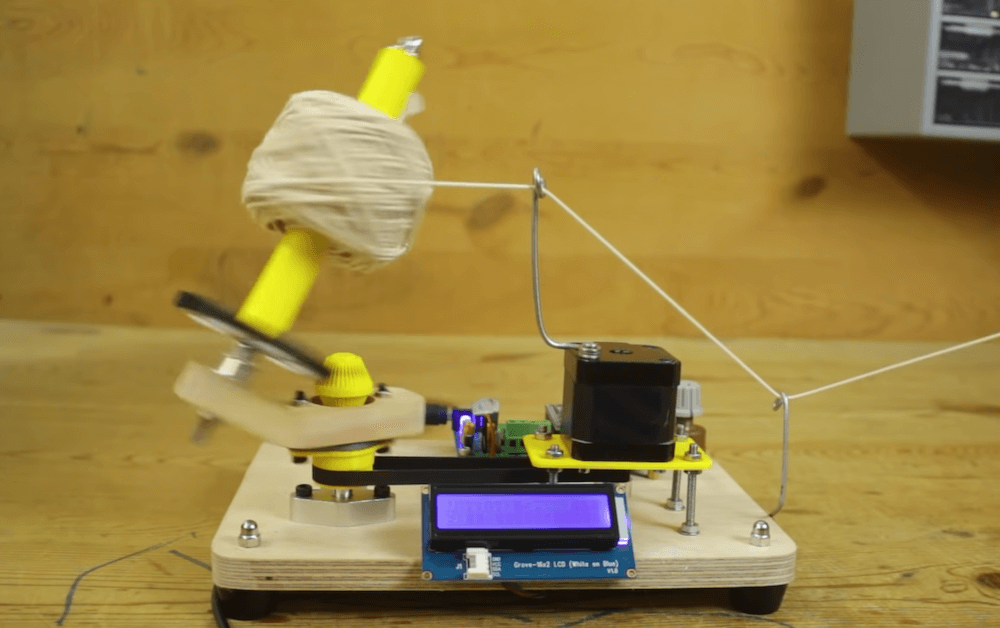Resident Evil 2 on the Nintendo 64 is a port that should have not been possible. The original PlayStation release came on 2 CD’s and totaled over 1.2 Gb in size yet somehow the entire game was compressed onto a 64Mb cartridge for the Nintendo 64. In this episode we take a look at how it was achieved.
External News
Learn to code and write games on the Nintendo Game Boy | MVG
The Nintendo Game Boy is an excellent system to make homebrew games on. I spent an afternoon looking at the Game Boy Development Kit (GDBK) and seeing what can be achieved
The Mystery of Sonic R’s Impossible Code – Coding Secrets
The DSP code in Sonic R shouldn’t have been possible. In this episode of Coding Secrets I look into what exactly is going on!
This Acoustic Levitation Wand Will Make You Feel Like a Wizard
Nothing is cooler than Redditor We-Make-Projects’ Arduino-powered sonic tractor beam!
Levitation has long been the domain of stage magicians, charlatans, and fiction, but there are technological means of achieving the same result. Aside from aircraft that could be considered to be levitating on air and boats that do the same on water, the most common examples of levitation in real world are maglev (magnetic levitation) trains. But you’ll probably never be able to build your own maglev train in your backyard. You can, however, experiment with acoustic levitation. We’ve seen a handful of notable acoustic levitators here on Hackster, but nothing is cooler than Redditor We-Make-Projects’ acoustic levitation wand that makes them a modern wizard.
Grand Theft Auto San Andreas is running on the PlayStation VITA | MVG
Grand Theft Auto San Andreas is out today for the PlayStation VITA thanks to TheFlow and Rinnegatamante In this episode we take a closer look at the port and break down just how this port was even possible.
Homemade machine puts a new spin on winding yarn
If you’ve ever wanted to wind balls of yarn, then look no further than this automated machine from Mr Innovative. The YouTuber’s DIY device is powered by an Arduino Nano and an A4988 stepper driver, spinning up a round conglomeration of yarn via a NEMA17 motor and a timing belt.
The ball is wound on an offset spindle, which is mechanically controlled to pitch back and forth and spin itself as the overall assembly rotates, producing an interesting geometric pattern.

Design and Development of a Robotic Hand
Over the few years, there have been great steps in the development of functional prosthetic hands. However, even the most advanced hands lack a combination of high functionality and affordability. A new prosthetic hand has been designed and developed combining high functionality and affordability thanks to rapid prototyping techniques. This video presents the design of a five-fingered prosthetic hand that can be programmed to have multiple grip patterns using force myography (FMG) as a control signal instead of electromyography (EMG) signal. A novel FMG sensor was developed using strain gages and a high resolution ADC to detect mechanical muscle contractions from the residual forearm of amputees.
Arduino IR – Control LEDs with Arduino remote control [Using 1838 ir sensor]
In this tutorial, you’ll learn about using Arduino ir remote. First, you’ll see how to connect the 1838 ir receiver with Arduino Uno and how to Find the Code for each Remote Control Button. Second, you’ll see how to use ir remote to control any device connect with Arduino LEDs, DC Motor, or any more.
How a Cereal Box Toy Hacked AT&T’s Phone Lines
How a simple toy, found in a cereal box, hacked AT&T’s phone lines.
EPaper Dashboard
I needed a device that can store the date of a specific event, which I can check later. To be more precise, I needed a device that can store the last date I fed the flowers. The device must be portable and powered by a battery. And because a whole display only for one date is a bit of a waste, I decided to add more features like weather and calendar widgets.
The obvious choice for the display was E-Paper, and for the IC initially, I picked esp8266, but after comparing it with esp32, I had to switch it.
The esp32 has a feature that is very important for this project – esp_sleep_enable_ext1_wakeup. This allows IC to wake with almost any from the GPIO(here a good tutorial https://randomnerdtutorials.com/esp32-external-wake-up-deep-sleep/).
